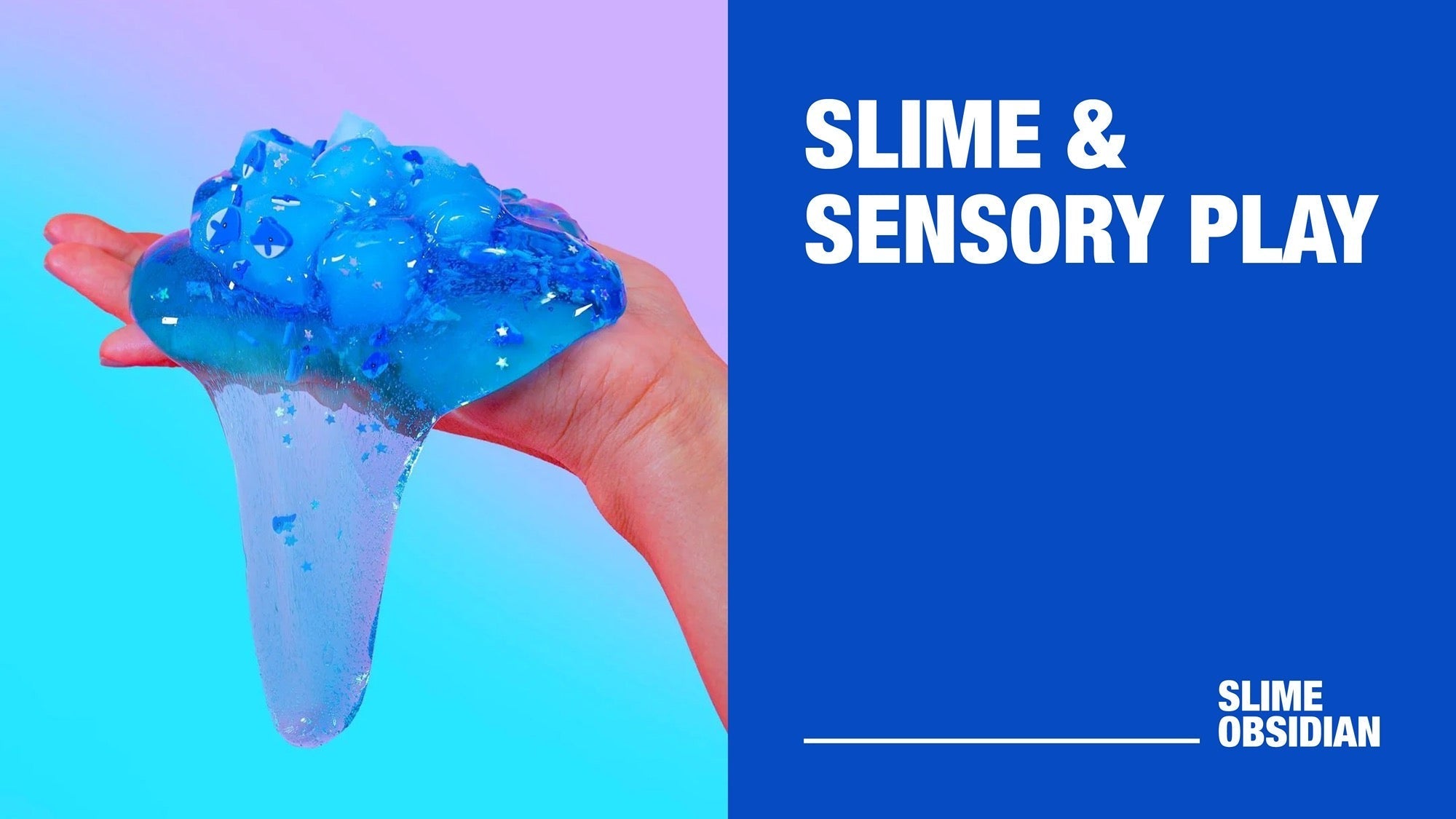As science and technology evolve, it's becoming apparent that sensory play supports learning and development. In response, toys such as texture or sensory tables are becoming a popular learning tool in early childhood education settings. When children can combine the sense of touch with other senses, such as smell and vision, this helps build cognitive skills, creativity, and fine motor skills.
Sensory play is also a primary focus among researchers interested in sensory processing disorders. This type of play can help children who are either hyper- or hypo-sensitive to stimuli, supporting therapy options. One beneficial strategy is the incorporation of sensory toys — like slime!
Here's why slime is great for all developing children, including those living with sensory processing issues.
Slime Is Great for Kids – Here's Why
A toddler's brain is like a sponge, and to learn about the world around them, they rely heavily on their senses. By touching, smelling, tasting, listening, and seeing, toddlers begin to make connections, learning about themselves and their surroundings. Even teenagers and adults often learn best when engaging their senses.
This connection between one's senses and development brings us to sensory play, which is any activity that stimulates a child's senses. These activities allow kids to create, play, investigate, and explore as they take in sensory information. Each new experience helps their brains build new connections and pathways, supporting optimal development.
Whether a child is playing in a sandbox or finger painting, endless opportunities encourage sensory play.
One incredible sensory toy is slime. Thanks to the many textures and smells associated with slime, this sensory play activity helps kids connect with nearly all their senses. As they squish and pull the slime, they can focus on how it feels and looks as it changes shape. As they transform and squeeze the slime in their hands, they'll also hear sounds and smell scents, which can benefit behavioral development.
This combination of sensory input can also support audiovisual therapy for children with autism and sensory processing disorder. This link is the basis behind the autonomous sensory meridian response (ASMR).
Whether a child is playing with Birthday Cake Cloud slime or Mango Buttercream slime, there are many unique options.
Other benefits of slime for kids include the development of:
- Greater creativity
- Longer attention spans
- Independence and self-sufficiency
- Fine motor skills
- Thinking skills
The Sensory Benefits of Slime
All children benefit from sensory play. However, certain groups of children find sensory play more than a fun exploration activity. Sensory play can be therapeutic for these children, including those living with a sensory processing disorder. This condition affects how your brain processes sensory information — otherwise known as stimuli.
These children often become quickly overwhelmed as they are hypersensitive to stimuli. This experience is known as sensory overload. For example, bright lights or strong smells can make a child feel overwhelmed. However, this disorder can also cause the opposite feeling, as some children require more stimuli than their peers. These children are hypo-sensitive to stimuli.
Some doctors believe that sensory processing disorder is a symptom of other disorders, such as ADHD, anxiety, or autism spectrum disorder. To support children with such disorders, many therapists are now incorporating various activities and toys, including slime. It is the perfect tool to inspire imagination, enhance motor skills, and encourage fun sensory play! Slime and other sensory toys can also help children with sensory processing disorder focus, relax, and calm down during a specific event or situation.
Recommended reading: Slime for Neurodivergent Children
Explore the Sensory Benefits of Slime With Your Toddler
If you believe your child would benefit from slime, or you have a little slimer who wants to expand their collection, there are many great slime creations to explore.
Whether you're interested in slime for optimal development or as part of your child's therapy plan, now is the time to unlock the sensory benefits of slime. They're fun to collect, as each creation offers a unique sensory experience.
Don't know which texture is best for your toddler? Read more about them here.
You can also check out the following resources:

